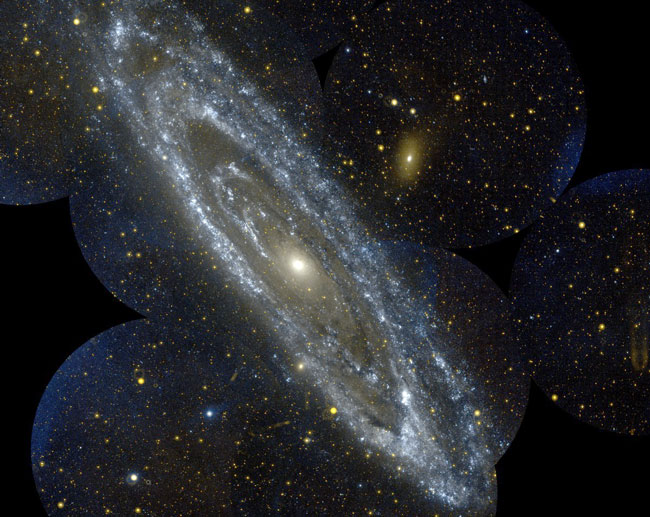TheSpam wrote:Question: There is a rather large round source of light on the Ultraviolet image seen clearly just slightly below middle on the far left. It appears much smaller in the optical light image (1/4 size roughly).
Any explanation for this? Larger/Brighter in Ultraviolet than in optical, what would that suggest?
If your having trouble finding it quickly mouse over the two images repeatedly, it should become apparent fairly quickly.
I know what star you mean. I've been looking for it with my astronomy software, but I can't find anything obvious.
But take a look at this GALEX image:
Can you see a very blue-looking star below and to the left of Andromeda at about a 7.30 position? Okay, now take a look at this visual-light image of Andromeda:

Can you see a very red star above and to the left of Andromeda? I believe that the red star in this picture is the same as the blue star in the GALEX image. But how can a star that is very red visually be very blue in ultraviolet light? Is that even possible?
Apparently so. The star in question would be EG Andromedae, a cool red M giant. EG Andromedae is very far away, possibly as much as 2,000 light-years, and it may be around 500 times as bright as the Sun in visual light. That, of course, means that it would be even brighter in infrared light, given the fact that this star is so cool. Its color index is 1.613 ± 0.014, which is a lot.
So EG Andromeda is a visually very red and cool star. But it is also a massive star, and its core is blazingly hot. Even though EG Andromedae is visually a red star, its core emits a lot of far ultraviolet light, and the star will show up as strikingly blue in a GALEX image.
Ann
 Ultraviolet Andromeda
Ultraviolet Andromeda


